Budapest’s spacious Freedom Square (Szabadság tér to the Hungarians) was developed at the end of the nineteenth century. The square is lined with monumental, grand buildings that symbolized the city’s growing wealth and importance.
History
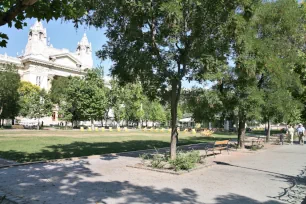
Freedom Square, also called Liberty Square, sits on the site of what was once a huge barrack known as Újépűlet. The barrack was built in 1786 by the Austrians, who called it the Neugebäude. It became a symbol of repression after the Hungarian revolution in 1848 – 1849 when many Hungarians were imprisoned and executed here. The most famous Hungarian executed at the Neugebäude was Lajos Batthyány, who acted as prime minister during the Hungarian revolution.
Shortly after the Austrian-Hungarian compromise of 1867 plans were made to demolish the building, but it was only at the end of the nineteenth century, around 1897-1899 that the barracks made way for a new square, ‘Szabadság tér’ or, in English, ‘Freedom Square’.
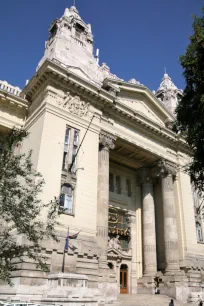
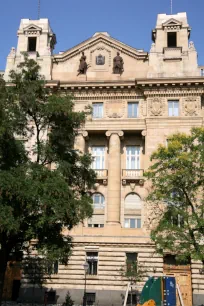
Stock Exchange Building
Two immense buildings at the Freedom Square were designed by the Hungarian architect Ignác Alpár, who is best known for his Vajdahunyad Castle. Both buildings, which stand opposite one another, were completed in 1905.
The grandest of the two, the former Stock Exchange Building (Tőzsdepalota), graces the west side of Freedom Square. Its design is neoclassical in style with Secessionist decorations. This is particularly noticeable at the building’s impressive entrance, which is crowned with two temple-like towers. In 1948 the Communists closed down the stock exchange and the building became the headquarters of the Hungarian Television.
Hungarian National Bank
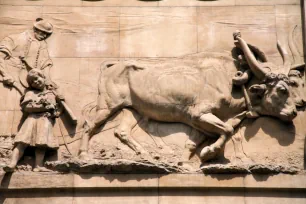
Ignác Alpár’s other building, located at the square’s eastern side, is the Hungarian National Bank Building (Magyar Nemzetí Bank). The structure was built in the late classical style and includes elegant limestone reliefs by sculptor Károly Sennyei on the exterior, depicting various aspects of money, commerce and trade.
U.S. Embassy Building
Another interesting building is the U.S. Embassy Building (Chancery Building), completed in 1900 and housing U.S. diplomats since 1935. Designed by architects Aladár Kármán and Gyula Ullman, this building was first the home of the Hungarian Hall of Commerce.
Behind the US Embassy, facing hold street, stands the Post Office Savings Bank Building. Built in Art Nouveau style, it was designed by a favorite architect of that period, Ödön Lechner. The facade is decorated with flower and bee motifs, symbolizing the bank’s activity. The building’s cornice is stunning, as is the majolica (earthenware with a white tin glaze) roof ornamentation.
Soviet Monument
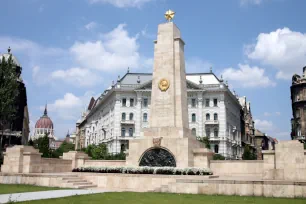
One of the very few remaining Soviet monuments in Budapest occupies a prominent place in the middle of Freedom Square. The monument was built by Károly Antal and honors the soldiers of the Red Army who died in 1944-1945 during the liberation of Budapest.
The monument consists of an obelisk with a crest showing the Communist hammer and sickle. At the bottom is a bas-relief of Soviet soldiers engaged in battle. The obelisk is crowned with a five-pointed Communist star.
Many modern-day Hungarians are not terribly fond of this monument and would prefer to see it removed. Not only is it a reminder of the Soviet occupation, but to add insult to injury, the monument stands at the exact location of an early twentieth-century monument that was erected in protest of the 1920 Treaty of Trianon, which resulted in the loss of almost three quarters of Hungary’s territory.
Other Monuments
Near the Hungarian National Bank is a statue honoring the American general Harry Bandholtz, who in 1919 prevented Romanian troops from looting the Hungarian National Museum. In 2011 another statue of an American, that of former president Ronald Reagan, was unveiled at the square. The bronze statue, a work of the Hungarian sculptor Istvan Mate, was created to honor Reagan for his role in bringing an end to the Cold War.

